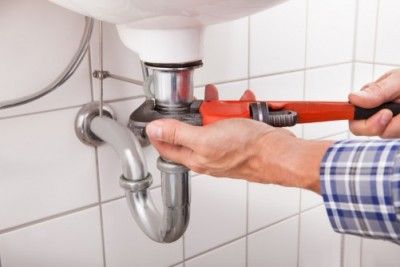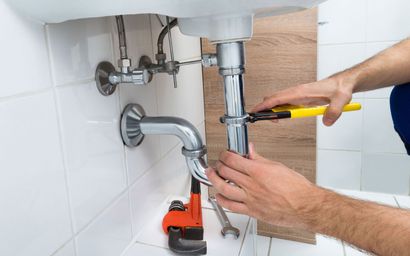Anatomy of Your House's Plumbing System: How It Matters
Anatomy of Your House's Plumbing System: How It Matters
Blog Article
Just how do you actually feel on the subject of Understanding Your Home's Plumbing Anatomy?

Understanding exactly how your home's pipes system functions is crucial for every property owner. From providing tidy water for alcohol consumption, food preparation, and bathing to safely removing wastewater, a properly maintained plumbing system is important for your household's wellness and convenience. In this thorough overview, we'll explore the intricate network that makes up your home's pipes and deal tips on maintenance, upgrades, and handling common issues.
Introduction
Your home's plumbing system is more than just a network of pipes; it's a complex system that ensures you have access to clean water and efficient wastewater removal. Knowing its elements and just how they interact can aid you stop pricey repair services and make sure whatever runs efficiently.
Fundamental Parts of a Plumbing System
Pipes and Tubing
At the heart of your plumbing system are the pipelines and tubes that lug water throughout your home. These can be constructed from different materials such as copper, PVC, or PEX, each with its advantages in terms of resilience and cost-effectiveness.
Components: Sinks, Toilets, Showers, and so on.
Components like sinks, bathrooms, showers, and bath tubs are where water is utilized in your house. Comprehending how these fixtures attach to the pipes system assists in identifying problems and planning upgrades.
Shutoffs and Shut-off Points
Shutoffs regulate the circulation of water in your plumbing system. Shut-off valves are critical throughout emergency situations or when you need to make repairs, permitting you to isolate parts of the system without disrupting water flow to the whole home.
Supply Of Water System
Main Water Line
The major water line links your home to the community water supply or an exclusive well. It's where water enters your home and is dispersed to various components.
Water Meter and Stress Regulator
The water meter measures your water use, while a pressure regulator makes sure that water streams at a safe stress throughout your home's plumbing system, protecting against damages to pipes and components.
Cold Water vs. Hot Water Lines
Understanding the difference between cold water lines, which provide water directly from the main, and warm water lines, which carry warmed water from the water heater, helps in fixing and planning for upgrades.
Water drainage System
Drain Piping and Traps
Drain pipes carry wastewater away from sinks, showers, and commodes to the sewage system or sewage-disposal tank. Traps protect against sewage system gases from entering your home and likewise trap particles that can create blockages.
Ventilation Pipelines
Ventilation pipes permit air into the drainage system, protecting against suction that might slow water drainage and trigger traps to vacant. Appropriate ventilation is necessary for maintaining the honesty of your plumbing system.
Relevance of Appropriate Drainage
Making certain proper water drainage avoids backups and water damage. On a regular basis cleaning drains pipes and keeping traps can stop costly repair work and expand the life of your plumbing system.
Water Heater
Sorts Of Water Heaters
Water heaters can be tankless or typical tank-style. Tankless heaters warm water as needed, while tanks save heated water for instant usage.
Updating Your Plumbing System
Reasons for Updating
Updating to water-efficient fixtures or changing old pipes can enhance water top quality, lower water bills, and enhance the worth of your home.
Modern Pipes Technologies and Their Benefits
Explore technologies like wise leakage detectors, water-saving commodes, and energy-efficient hot water heater that can conserve cash and reduce environmental effect.
Price Factors To Consider and ROI
Calculate the upfront expenses versus long-lasting financial savings when considering plumbing upgrades. Numerous upgrades pay for themselves with minimized energy costs and less repairs.
How Water Heaters Connect to the Plumbing System
Understanding how water heaters link to both the cold water supply and hot water circulation lines assists in identifying concerns like not enough warm water or leakages.
Upkeep Tips for Water Heaters
Regularly flushing your water heater to remove sediment, checking the temperature settings, and inspecting for leaks can extend its lifespan and improve energy efficiency.
Usual Pipes Concerns
Leakages and Their Reasons
Leakages can happen because of aging pipes, loose fittings, or high water pressure. Addressing leaks immediately stops water damages and mold and mildew development.
Obstructions and Blockages
Clogs in drains and toilets are frequently triggered by purging non-flushable products or an accumulation of oil and hair. Utilizing drain screens and bearing in mind what drops your drains pipes can protect against obstructions.
Indicators of Pipes Troubles to Expect
Low tide stress, slow-moving drains pipes, foul odors, or abnormally high water expenses are indications of prospective plumbing issues that ought to be dealt with quickly.
Plumbing Upkeep Tips
Routine Evaluations and Checks
Schedule yearly pipes evaluations to capture problems early. Search for signs of leakages, rust, or mineral buildup in taps and showerheads.
DIY Maintenance Tasks
Straightforward tasks like cleaning tap aerators, checking for commode leakages using color tablets, or insulating revealed pipes in cool environments can avoid significant pipes issues.
When to Call a Specialist Plumbing
Know when a pipes problem requires specialist knowledge. Trying complicated repairs without appropriate knowledge can cause more damage and greater fixing expenses.
Tips for Reducing Water Use
Simple routines like dealing with leaks without delay, taking shorter showers, and running full tons of laundry and meals can preserve water and lower your energy bills.
Eco-Friendly Pipes Options
Consider sustainable pipes materials like bamboo for floor covering, which is durable and eco-friendly, or recycled glass for counter tops.
Emergency situation Preparedness
Actions to Take During a Pipes Emergency situation
Know where your shut-off valves lie and just how to shut off the water in case of a burst pipe or significant leak.
Significance of Having Emergency Situation Contacts Helpful
Maintain contact info for neighborhood plumbers or emergency services conveniently available for quick action throughout a plumbing dilemma.
Ecological Influence and Conservation
Water-Saving Fixtures and Home Appliances
Mounting low-flow faucets, showerheads, and bathrooms can substantially lower water usage without sacrificing efficiency.
Do It Yourself Emergency Situation Fixes (When Applicable).
Short-term repairs like making use of air duct tape to patch a leaking pipe or putting a pail under a trickling tap can minimize damage till a professional plumbing shows up.
Final thought.
Recognizing the makeup of your home's pipes system empowers you to maintain it efficiently, saving time and money on repair work. By complying with routine maintenance routines and remaining notified regarding contemporary pipes modern technologies, you can guarantee your pipes system runs successfully for several years ahead.
HOW YOUR PLUMBING SYSTEM WORKS
Which Pipes Do What?
Blue lines = fresh water supply entering the building Red lines = hot water supply entering the building Grey lines = pipes carrying waste away from the building and venting pipes carrying gases away from the building (through the roof) YOUR MAIN PLUMBING SYSTEMS
There are two main plumbing systems that support your home s basic plumbing needs one that brings clean water into your home, and one that sends dirty water away from your home. Connected to the toilet, bath, shower, and other faucets in your home, these two systems keep your water flowing in the right directions.
ACCESSING FRESH WATER
Fresh and clean water is brought into your home through the main water supply line . Filtered through one pipe, this water is pressured to flow into the various fixtures in your home at any given time.
This water can be sourced from a well located on your property, a pond or river (mostly cottages), or, as in most cases, from the city s municipal water treatment centre. However, it is important to note that water that is untreated, such as the water siphoned from ponds or rivers, may not be safe to drink. Personal water supplies always need to be treated for hardness and contaminants before consumed.
MUNICIPAL WATER SUPPLIES
Improve taste and odour Remove sediment Eliminate hardness Reduce chlorine COLD WATER SUPPLY VS. HOT WATER SUPPLY
Cold water flows into your home or building through the service line, which then distributes hot or cold water to your fixtures. This line is most commonly run through a central column that runs floor to floor. Hot water runs in short and straight pipes as the longer the pipeline, the more heat that will be lost in the transfer. Having shorter pipes also allows residents to access hot water more quickly.
WASTE WATER SYSTEM
Your wastewater system is divided into two parts pipes that send wastewater away from your home and venting pipes that send sewer gas away from your home. Sewage water travels through pipes that flush the water and waste towards local sewers that are operated and managed by your city or town. Most sewer systems rely on gravity to move the wastewater to where it needs to go.
The further away from your toilet or sink, the larger wastewater pipes become. This allows for waste to be disposed of from various parts of your home or business at once without pipe blockages. The angle and flow of these pipes are also essential for keeping your waste pipes clear of build up.
https://harrisplumbing.ca/how-your-home-plumbing-system-works/

As an enthusiastic person who reads about Anatomy of a House: Understanding the Components, I assumed sharing that topic was worthwhile. Those who enjoyed our post if you please do not forget to pass it around. Thank you so much for taking the time to read it.
Call Today Report this page